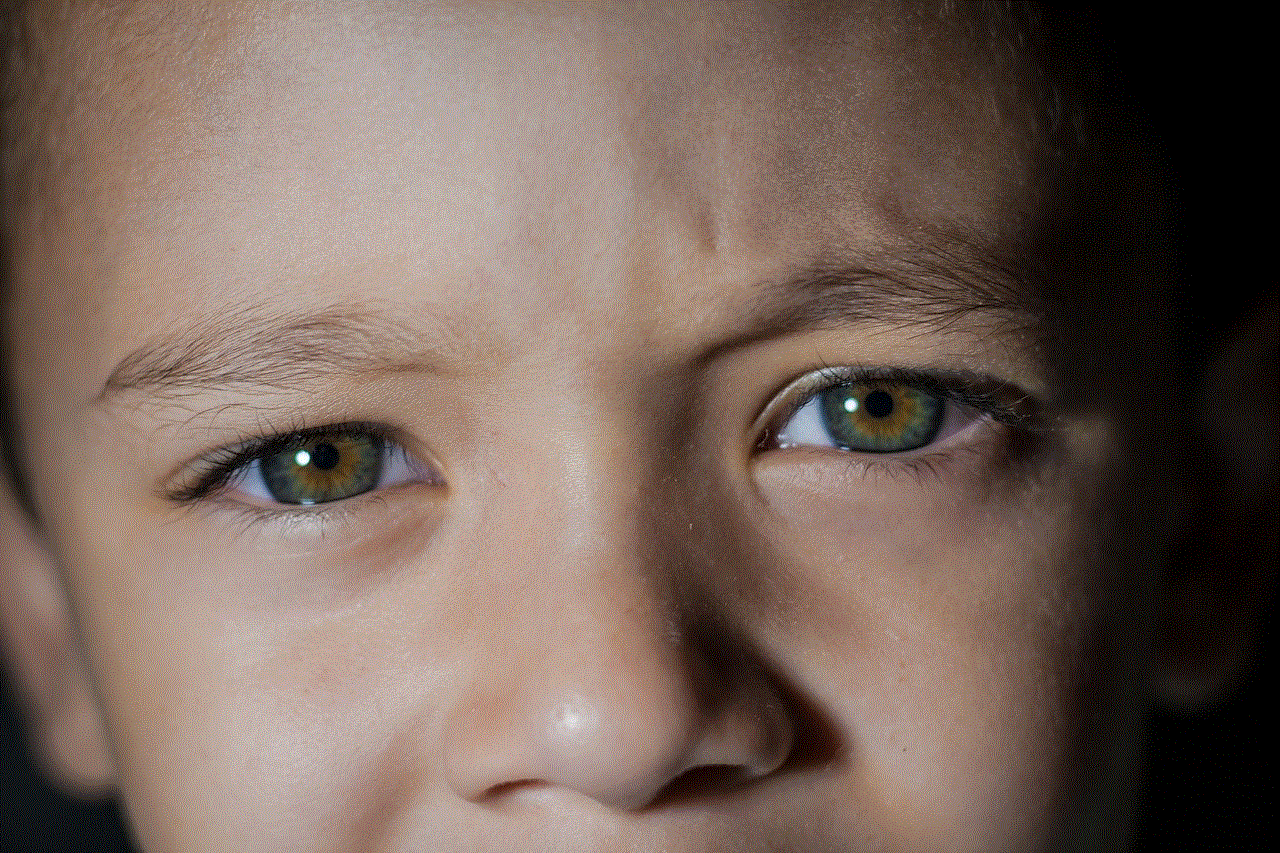safety app for iphone
Title: The Best Safety Apps for iPhone: Ensuring Your Personal Security
Introduction (200 words)
In today’s fast-paced world, personal safety is of paramount importance. Thankfully, technology has made it easier than ever to enhance our personal security. With the increasing popularity of smartphones, safety apps have become a crucial tool for ensuring our well-being. This article will explore the best safety apps available for iPhone users, providing an in-depth analysis of their features, benefits, and how they can help keep you safe.
1. Life360 (200 words)
Life360 is a top-rated safety app that allows you to create a private network of your loved ones. By sharing your location with trusted contacts, you can ensure their peace of mind. Additionally, the app offers features such as SOS alerts, 24/7 emergency assistance, and real-time location tracking. With Life360, you can stay connected with your family, friends, and even track your lost or stolen iPhone.
2. bSafe (200 words)
bSafe is another powerful safety app that offers a range of features designed to keep you safe. Along with GPS tracking and emergency SOS alerts, bSafe also provides a unique ‘Follow Me’ feature that allows your contacts to watch over you remotely. Additionally, it offers a ‘Fake Call’ feature to help you escape uncomfortable or dangerous situations discreetly.
3. Red Panic Button (200 words)
Red Panic Button is a straightforward yet effective safety app. With just one tap, it sends an emergency alert to your chosen contacts, including your current location. The app also allows you to send alerts via email, text messages, and social media platforms. Red Panic Button is an excellent tool for quick and discreet personal safety.
4. Noonlight (200 words)
Noonlight is an app that connects you to emergency services in real-time. By activating the app and holding down a button, you can reach out for help immediately. Noonlight also offers additional features such as automatic location sharing and integration with various smart devices. It provides an added layer of security when traveling alone or in potentially risky situations.
5. SafeTrek (200 words)
SafeTrek is designed to provide a sense of security in uncertain situations. With SafeTrek, you can hold down a button in the app when you feel unsafe. If you release the button without entering your PIN, the app will automatically notify local authorities of your location. SafeTrek is ideal for individuals who frequently walk alone at night or feel vulnerable in public places.
6. Circle of 6 (200 words)
Circle of 6 aims to prevent violence before it occurs by promoting safe communication. The app allows you to select six trusted contacts who can be easily contacted in an emergency. Circle of 6 also provides quick access to hotlines and resources related to sexual assault, domestic violence, and other safety concerns.
7. Guardly (200 words)
Guardly provides a comprehensive safety solution for iPhone users. Alongside features like live streaming, location sharing, and emergency alerts, Guardly also integrates with building security systems. This integration allows users to communicate directly with security personnel during emergencies, ensuring a swift response.
8. React Mobile (200 words)
React Mobile is a user-friendly app with a ‘Follow Me’ feature, enabling your chosen contacts to track your location. Additionally, React Mobile provides an SOS button that immediately alerts your contacts of your distress and sends them your precise location. The app also integrates with wearable smart devices for added convenience.
9. Silent Beacon (200 words)
Silent Beacon is a versatile safety app that offers a range of personal security features. Along with SOS alerts and GPS tracking, Silent Beacon provides in-app chat options, allowing you to communicate with your contacts discreetly. The app also supports wearable devices and features a rechargeable battery, ensuring its availability during emergencies.
10. Watch Over Me (200 words)
Watch Over Me is an app that allows you to customize your personal safety settings according to your needs. By setting a timer, the app will notify your contacts if you fail to check in within a specified time frame. Watch Over Me also offers a ‘Shake’ feature, allowing you to trigger an emergency alert by shaking your iPhone.
Conclusion (150 words)
In an increasingly connected world, safety apps for iPhone users have become indispensable tools for personal security. With features such as GPS tracking, emergency alerts, and real-time communication, these apps offer peace of mind and a sense of security. Whether you are walking alone at night, traveling, or simply want to stay connected with loved ones, these safety apps provide an added layer of protection. By utilizing these apps, you can ensure that help is just a click away, allowing you to navigate your daily life with confidence and security.
should a 7 year-old have a phone 90 19
In today’s digital age, it is becoming increasingly common for children as young as seven years old to have their own cell phones. With the rise of smartphones and the constant connectivity they provide, many parents are faced with the question of whether or not their child should have a phone at such a young age.
The decision to give a child a phone is a personal one, and there are many factors to consider. From safety concerns to social pressures, there are valid arguments on both sides of the debate. In this article, we will delve deeper into the topic and explore the pros and cons of giving a seven-year-old a phone.
Safety Concerns
One of the main reasons parents may choose to give their child a phone at a young age is for safety reasons. With a phone, a child can easily reach their parents or other emergency contacts in case of an emergency. This can provide peace of mind for parents, especially if their child is away from home for extended periods of time, such as at school or a friend’s house.
However, it is important to note that giving a child a phone does not guarantee their safety. Children can still encounter dangerous situations, both online and in real life, even with a phone in their possession. It is crucial for parents to educate their children about online safety, such as not sharing personal information with strangers and being cautious of suspicious messages or requests.
Distraction and Addiction
Another concern with giving a child a phone is the potential for distraction and addiction. Smartphones are designed to be addictive with their constant notifications, social media apps, and endless entertainment options. This can be detrimental to a child’s development, as it can lead to decreased focus and attention span, as well as a lack of interest in other activities.
Furthermore, children may become addicted to their phones, constantly seeking the next “hit” of dopamine from likes, comments, and messages. This can lead to neglecting responsibilities, such as homework and household chores, and even cause behavioral issues.
It is important for parents to set boundaries and monitor their child’s phone usage to prevent distraction and addiction. This can include limiting screen time, restricting certain apps, and having regular conversations about responsible phone usage.
Social Pressure



In today’s society, it is not uncommon for children to compare themselves to their peers and feel pressure to fit in. Many children may feel left out if they do not have a phone like their friends, and this can lead to feelings of exclusion and low self-esteem.
However, it is important for parents to remember that they are the ones ultimately responsible for their child’s well-being, not their child’s friends or society’s expectations. Giving in to social pressure and giving a child a phone before they are ready can result in negative consequences.
Financial Responsibility
Another factor to consider is the financial responsibility of giving a child a phone. Smartphones can be expensive, and with the constant release of new models, it can be a never-ending expense. Moreover, children may not understand the value of money and may not take care of their phone, leading to costly repairs or replacements.
Parents must also consider the added cost of a phone plan and the potential for their child to exceed data limits, resulting in expensive overage charges. It is important for parents to discuss the financial aspects of having a phone with their child and set clear expectations and boundaries.
Privacy and Cyberbullying
With a phone comes access to the internet and social media, which can pose a threat to a child’s privacy. Children may not fully understand the consequences of sharing personal information online, and this can put them at risk of cyberbullying, identity theft, and other online dangers.
Furthermore, cyberbullying is a prevalent issue among young children, and having a phone can make it easier for bullies to target their victims. Parents must have open and honest discussions with their child about online safety, as well as monitor their child’s online activity to protect their privacy and well-being.
Maturity and Responsibility
One of the most important factors to consider when deciding if a seven-year-old should have a phone is their level of maturity and responsibility. While some children may be responsible enough to have a phone, others may not be ready for the added responsibility.
Children must understand that having a phone is a privilege, not a right, and it comes with responsibilities, such as taking care of the phone, following rules and guidelines, and being respectful in their online interactions. It is essential for parents to have open and ongoing conversations with their child about responsible phone usage and set clear expectations and consequences.
Alternatives to a Phone
While a smartphone may seem like the most convenient option for parents, there are alternatives to consider. For example, a child can use a basic phone with limited features for emergency purposes only. This can eliminate distractions and addiction while still providing a safety net for parents.
Another alternative is to have a family phone that can be used by the child when necessary. This can teach responsibility and limit screen time , as the phone is not constantly in the child’s possession.
Conclusion
In conclusion, the decision to give a seven-year-old a phone is a complex one with many factors to consider. While there are valid arguments for both sides, it ultimately comes down to the individual child and their level of maturity and responsibility.



Parents must weigh the potential benefits against the risks and make an informed decision based on their child’s needs and their family’s values. It is essential to have open and ongoing conversations with children about responsible phone usage, as well as monitor their online activity and set clear boundaries.
Ultimately, the most important thing is for parents to prioritize their child’s safety and well-being above societal pressures and technological advancements. By doing so, they can make the right decision for their child and ensure a healthy and balanced relationship with technology.
control fire tablet with phone 50 11
In today’s technologically advanced world, it’s no surprise that many of us rely on our smartphones for almost everything – from communication to entertainment. However, if you are a proud owner of a Fire tablet, you may be wondering how you can combine the convenience of your phone with the capabilities of your tablet. Well, the good news is, it is possible to control your Fire tablet with your phone! In this article, we will discuss everything you need to know about controlling your Fire tablet with your phone.
Before we delve into the specifics, let’s first understand why you would want to control your Fire tablet with your phone. The main reason is convenience. Imagine being able to access your tablet without having to physically pick it up every time. Whether you are in the middle of a movie, cooking in the kitchen, or simply lounging on the couch, controlling your Fire tablet with your phone allows you to access it without any disruption to your current activity.
So, how exactly can you control your Fire tablet with your phone? The answer lies in a feature called “Remote Control” that is available on both Fire tablets and Fire TV devices. With this feature, you can use your phone as a remote control for your Fire tablet, allowing you to navigate through the device, launch apps, and control media playback.
To get started, you will need to download the Amazon Fire TV app on your phone. This app is available for both Android and iOS devices. Once downloaded, make sure your phone and Fire tablet are connected to the same Wi-Fi network. Then, open the app and select your Fire tablet from the list of available devices. You may be prompted to enter a code that appears on your Fire tablet to complete the connection.
Once your phone is connected to your Fire tablet, you will see a virtual remote control on your phone’s screen. This remote control is similar to the one that comes with your Fire tablet, with all the necessary buttons for navigation and media control. You can use this to navigate through your tablet, launch apps, and control media playback.
One of the most useful features of controlling your Fire tablet with your phone is the ability to type using your phone’s keyboard. Instead of typing on your tablet’s on-screen keyboard, which can be time-consuming and frustrating, you can simply use your phone’s keyboard to type on your tablet. This is especially useful when you need to enter text in an app or website on your tablet.
In addition to controlling your tablet, the Amazon Fire TV app also allows you to access the Alexa voice assistant. This means you can use your phone to control your tablet using voice commands. You can ask Alexa to open apps, play music, or even search for content on your tablet. This hands-free control adds another layer of convenience to the already useful feature of controlling your Fire tablet with your phone.
Apart from the Amazon Fire TV app, there are also other third-party apps that allow you to control your Fire tablet with your phone. One such app is “Remote for Fire TV” which is available for both Android and iOS devices. This app also offers similar features to the Amazon Fire TV app, including a virtual remote control and voice control with Alexa.
In addition to controlling your Fire tablet with your phone, you can also use your phone as a second screen for your tablet. This means you can mirror your tablet’s screen on your phone, allowing you to view and control your tablet’s screen from your phone. This can be useful when you want to watch a movie or TV show on your tablet while also keeping an eye on your phone for notifications or messages.
To use your phone as a second screen for your Fire tablet, you will need to download the “Second Screen” app from the Amazon Appstore. This app is available for both Android and iOS devices. Once downloaded, open the app and select your Fire tablet from the list of available devices. You will then see a mirrored version of your tablet’s screen on your phone, with the option to control it using your phone’s touch screen.
Besides controlling your Fire tablet with your phone, there are also other ways to integrate the two devices. For example, you can use your phone as a mobile hotspot to provide internet access to your Fire tablet. This can be useful when you are in an area with no Wi-Fi, or when you want a more stable and secure internet connection for your tablet.
Another way to integrate your phone and Fire tablet is to use the “Send to Kindle” feature. This feature allows you to send documents, web pages, and other content from your phone to your Fire tablet for easy access. This is particularly useful when you want to read an article or document on a larger screen, or when you want to access content on your tablet that is not available on your phone.



In conclusion, controlling your Fire tablet with your phone not only adds convenience but also enhances the overall user experience. With the Amazon Fire TV app, you can use your phone as a remote control, type using your phone’s keyboard, and even access Alexa for voice control. Additionally, using your phone as a second screen and integrating the two devices in other ways can further enhance the capabilities of your Fire tablet. So, if you own a Fire tablet and a smartphone, don’t hesitate to try out these features and make the most out of your devices!
